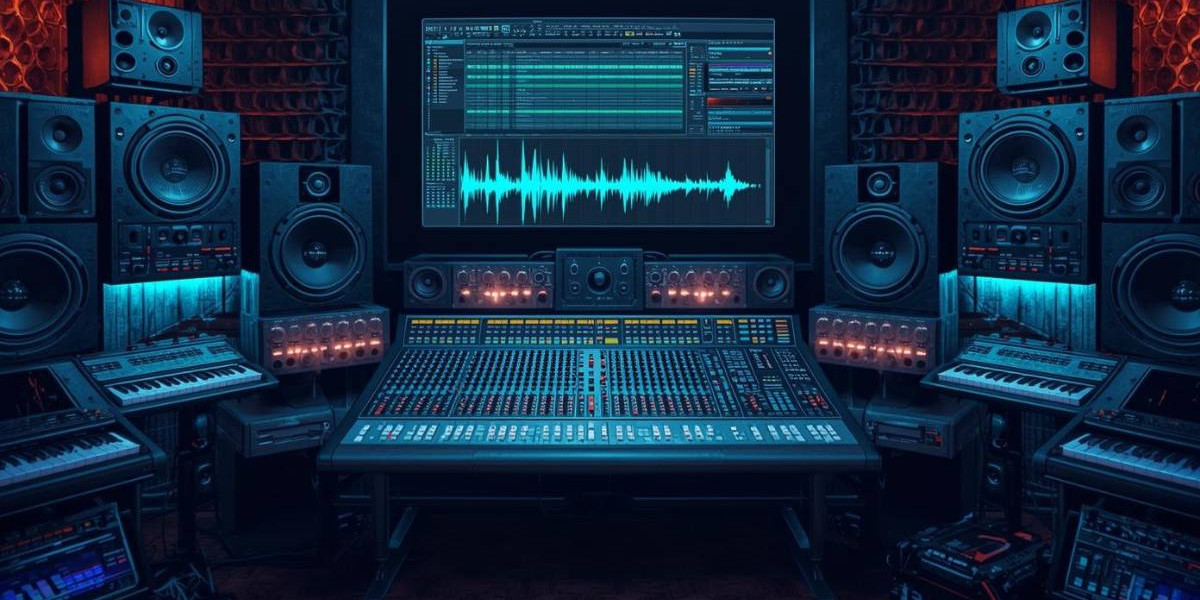Every unforgettable song begins long before it hits your playlist. Behind the finished track lies a meticulous journey — one of creativity, experimentation, and technical mastery. The audio production process is where sound becomes story, emotion becomes frequency, and art meets science.
Let’s take a closer look inside the studio and uncover how great music is built — step by step.
1. Inspiration and Pre-Production: Laying the Foundation
Every project starts with a vision. Artists, producers, and songwriters gather to define the song’s concept, tone, and message. This phase includes:
- Writing lyrics and melodies
- Selecting instruments or digital sounds
- Outlining arrangement ideas
Pre-production is where creative direction meets structure. The goal is to capture the essence before recording begins — to ensure every note serves the story. A clear foundation prevents chaos later and allows innovation to thrive within purpose.
2. Recording: Capturing the Performance
Once the creative blueprint is ready, the real magic begins. The studio transforms into a laboratory of sound. Engineers position microphones, calibrate equipment, and test acoustics to achieve optimal clarity and depth.
Recording sessions can involve live instruments, vocals, or digital synthesis. The focus here is authenticity — capturing emotion with precision. Every take matters. Sometimes the most powerful recordings are not technically perfect, but emotionally raw.
3. Editing: Refining the Raw Material
After recording comes editing, the invisible craftsmanship that shapes performance into perfection. Engineers clean up tracks, adjust timing, and eliminate background noise. This phase also includes comping (choosing the best takes), aligning rhythms, and fine-tuning pitch.
Editing isn’t about erasing human imperfection — it’s about enhancing clarity without losing soul. The aim is to keep the natural flow intact while preparing the mix for its full potential.
4. Mixing: Sculpting Space and Emotion
Mixing is where technical skill and artistic intuition collide. Each sound is balanced, EQ’d, and placed within the stereo field. Effects like reverb, delay, and compression are added to create dimension and depth.
A great mix transforms dozens of layers into one unified experience. It determines how instruments interact, how vocals sit in the mix, and how energy flows through the track. This is where the song truly begins to breathe.

5. Mastering: The Final Sonic Polish
The final step, mastering, gives the track its professional edge. Here, subtle adjustments to tone, loudness, and frequency balance ensure consistency across all playback systems — from headphones to stadium speakers.
Mastering isn’t about making the song louder; it’s about refining its identity. The result is a cohesive, polished track ready for distribution — the difference between a demo and a timeless record.
6. Collaboration and Technology: The Heart of Modern Production
Today’s studios blend creativity with advanced digital tools. From AI-assisted mastering to virtual instruments and cloud-based sessions, innovation has democratized music creation. Yet, even with all this technology, the human ear — and the emotional intent behind it — remains irreplaceable.
Every producer, engineer, and artist contributes their unique perspective. Together, they turn technical processes into emotional storytelling through sound.
Conclusion: Where Vision Becomes Vibration
The creative audio process is far more than a checklist — it’s a journey of transformation. Every stage, from inspiration to mastering, is a step toward capturing the unspoken language of emotion.
Inside the studio, every decision counts. The tools may evolve, but the mission remains the same: to create sound that connects, moves, and endures.
Because the most powerful songs aren’t just heard — they’re felt.



